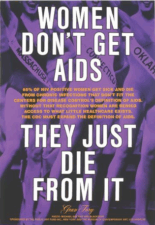Kathlyn Oliver is best known for her suffrage activism and advocacy for the rights of domestic workers. Oliver originally came from a middle-class background, with a father in the civil service.[1] However, after his death Oliver entered employment as a domestic servant from 1905, having found herself without the means to survive or a high standard of education.[2] Historian Laura Schwartz has discussed Oliver’s founding of The Domestic Workers’ Union of Great Britain and Ireland in 1909, part of the National Federation of Women Workers which aimed to obtain better rights for union workers.[3] She contributed to the Freewoman, a short-lived publication which ran from 1911 to 1912 and was ground-breaking due to its discussion of women’s rights and analysis of heterosexuality.[4] Within one issue, Oliver detailed previous engagements which she broke off due to the idea of marriage leaving her ‘repelled and disgusted.’[5] Despite this level of openness with readers of the Freewoman, Oliver never publicly discussed her same sex attraction. This attraction was only realised after she read ‘The Intermediate Sex,’ the work of sexual radical Edward Carpenter. Oliver wrote to him in 1915 and discussed her feelings for women candidly. I admire how Oliver experienced twentieth century Britain as a working-class lesbian woman. She was unafraid to voice her opinion on contemporary social issues in newsprint and campaign for real life change, and I was captivated by this boldness.
I first encountered Kathlyn Oliver within the pages of The Link, which was published monthly by journalist Alfred Barrett from 1915 to 1921. It allowed individuals seeking companionship to place a small advertisement describing themselves, their interests, and what they sought in a companion.[6] My recent research focused on the use of The Link by the lonely individual, the queer individual, and the modern girl, and demonstrated that women used the publication alongside men. I was analysing the July 1920 issue when a particular advertisement caught my eye.
With the signature ‘Miss K. Oliver, 7 Oakley Street, Chelsea, W’ attached, the advertisement read: ‘Bachelor Girl (London, S.W) educated, artistic, not too serious, loathing conventions, desires woman friend, man-hunters not appreciated.’[7] This advertisement was unusual, as though it followed an established pattern of queer coding, this pattern was usually used by men seeking a male companion. Historian Harry Cocks has argued that men who described themselves as ‘artistic, musical and unconventional’ within The Link did so to highlight their availability.[8] I noticed a similar pattern within these advertisements where men seeking men plainly stated a lack of desire for women, such as ‘Boy’ who described himself as ‘broadminded, artistic, affectionate,’ and ‘not woman hunter.’[9] There was also a significant emphasis placed on their isolation, with ‘Boy’ having declared himself ‘very lonely.’ Oliver establishes herself in similar terms within her advertisement as ‘artistic,’ ‘loathing conventions,’ and that ‘man-hunters [were] not appreciated.’ Being one of the few explicitly queer coded advertisements placed by women I could spot in the publication, it highlights the similarities between how men and women navigated expressions of same-sex attraction in a period of repression, albeit through coded means.
This advertisement adds a new dimension to Oliver’s correspondence with Carpenter where she outlined her search to find other women. Within this correspondence, Oliver emphasised her loneliness and isolation due to her sexuality. She described herself as ‘horribly lonely,’ and ‘unhappily quite out of touch’ with her friends and acquaintances.[10] She also stated that she ‘longed quite intensely for a woman friend, who would be to [her] more than anyone else in the world.’[11] Although Oliver mentioned times where she was in love with women, she also emphasised the pain of rejection, and described her jealousy of a female friend who had been in a ‘physical as well as spiritual’ relationship with another woman for four years.[12] Oliver reached out to Carpenter to ask if he knew of a place to know like-minded women, such as ‘a society or channel through which [she could] meet her other half.’[13] Historian Gay Wachman highlights the importance of Oliver reaching out to Carpenter to express herself and her feelings, rather than the ‘(hetero)sexually radical writers and readers of the Freewoman,’[14] since her heterosexual contemporaries would not understand her feelings.
Oliver’s correspondence with Carpenter sheds light on her use of newspaper advertisements to find women of a similar mind. Oliver wrote she was introduced to his work by a female friend she met through placing an advertisement in ‘a little pacifist and socialist paper.’[15] I traced this to the Daily Herald in 1915, where it read: ‘Would any lonely Woman Rebel, about 30, wish to correspond with another with a view to friendship?- Reply to Kathlyn Oliver.’[16] In a further advertisement within the West London Observer in 1932, Oliver declared herself a ‘Woman Bachelor,’ stated that she had ‘wide interests,’ and that she wanted ‘to hear from intelligent members, own sex.’[17] Both of these advertisements differed in phrasing to her advertisement within The Link. In The Link, Oliver had more space for the expression of her character, and access to an established pattern of coded language which she could adapt to her own needs. However, her continued use of the medium implies that it may have worked as an approach to become connected with other lesbian women.
Overall, Oliver’s use of The Link alongside other newspapers highlights the importance of coded language for queer individuals in a time of their social and often legal repression. Both men and women used The Link to express their identities and desires through these coded means, and many were prompted to by hopes that their loneliness could be remedied through creating connections with fellow queer people. Although Oliver’s advertisements may seem like nothing out of the ordinary at first glance, when linked to her emotional writing addressed to Carpenter, they highlight the the isolation felt by those who could not openly express their feelings and the importance of building a community among those who understood and shared their desires.
Iona Tytler is a recent graduate of the MSc in Gender History at the University of Glasgow. Her dissertation focused on the twentieth century companionship advertisement and its relevance to gender history, queer history, and the history of the emotions. Aspiring to work in the heritage sector, she can be found volunteering in her local museum in her spare time. Iona can also be found here: @ionatytler_
Image reprinted with thanks to the British Newspaper Archive.
[1] Lucy Delap, Knowing Their Place: Domestic Service in Twentieth Century Britain. (Oxford: Oxford University Press, 2011) p.26
[2] Ibid.
[3] Laura Schwartz, ‘A Job Like Any Other? Feminist Responses and Challenges to Domestic Worker Organising in Edwardian Britain,’ International Labour and Working-Class History. Issue 88. p.31
[4] Lucy Bland, ‘Heterosexuality, Feminism and the Freewoman Journal in Early Twentieth Century England,’ Women’s History Review. 4:1 (1995) p.5
[5] Kathlyn Oliver to Edward Carpenter, 1915. As quoted in Emily Hamer, Britannia’s Glory: A History of Twentieth-Century Lesbians. (London: Cassell, 1996) p.24
[6] Link. (1 February 1916) p.1
[7] Link. (1 July 1920) p.5
[8] Harry Cocks, Classified: The Secret History of the Personal Column. (London: Arrow, 2010) p.8
[9] Link. (1 December 1920) p.8
[10] Kathlyn Oliver to Edward Carpenter, 1915. As quoted in Emily Hamer, Britannia’s Glory: A History of Twentieth-Century Lesbians. (London: Cassell, 1996) p.15
[11] Ibid.
[12] Gay Wachman, Lesbian Empire: Radical Crosswriting in the 1920s. (New Jersey: Rutgers University Press, 2001) p.42; Hamer, Britania’s Glory. p.17
[13] Ibid. p.17
[14] Wachman, Lesbian Empire. p.43
[15] Lucy Bland, Banishing the Beast: Sexuality and the Early Feminists. (New York: The New Press, 1995) p.316
[16] ‘Miscellaneous,’ Daily Herald. (27 March 1915) p.15
[17] ‘Miscellaneous,’ West London Observer. (25 November 1932) p.13


